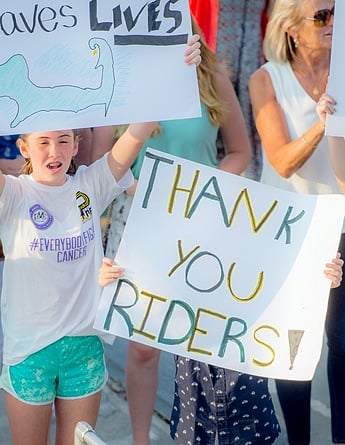This article was originally published on Dana-Farber Cancer Institute's Insight blog on March 3, 2020, and updated on March 19, 2020. Medically Reviewed By: Candace Hsieh, RN; Sarah Hammond, MD; Craig Bunnell, MD, MPH.
The 2019 novel (new) coronavirus, named SARS-CoV-2, causes the disease COVID-19, a respiratory illness. The spread of COVID-19 is disrupting life — for those who have been infected with the virus as well as those who haven’t — on a global scale.
As with many public health issues, the coronavirus outbreak may pose special risks for some cancer patients. We spoke with Sarah Hammond, MD, an infectious disease specialist at Dana-Farber and Brigham and Women’s Hospital, and Craig Bunnell, MD, MPH, chief medical officer at Dana-Farber, about some of the specific challenges cancer patients may face at this time.
The situation regarding COVID-19 is rapidly evolving; for the latest information, be sure to seek out reputable sources of information, such as the CDC.
What steps should patients take to protect themselves from the virus?
The advice for patients with cancer is basically the same as for the general population:
- Wash hands frequently with sanitizer or soap and water and avoid touching your face as much as possible.
- Avoid contact with people known to be infected with the virus or with those showing symptoms of infection.
- Avoid crowds and situations where you’re likely to be less than six feet from others. (Airborne spread of the virus occurs when an infected individual coughs or sneezes, releasing droplets that can travel three feet. Maintaining a six-foot distance provides a safety margin.)
- Avoid cafeteria-style eating areas where self-serve utensils are shared by customers.
- Use public transportation only when necessary and wash hands after using any public facility.
Are all patients with cancer at equal risk for infection?
Patients with a weakened immune system may be at increased risk because their defenses against infection are lowered. This includes patients with blood-related cancers such as leukemia, lymphoma, or multiple myeloma, which directly affect cells of the immune system, and those undergoing chemotherapy treatment.
Patients over the age of 70 are more likely to develop severe cases of COVID-19, as are those who also have cardiovascular disease, diabetes, or high blood pressure, or are active tobacco smokers.
The increased risk does not necessarily end at the conclusion of treatment. Research is under way to better understand how long cancer survivors remain more susceptible to infection. As a general rule, as patients get further out from the time of their treatment, their immune system gradually reconstitutes.
Does coronavirus infection produce different symptoms in cancer patients than in others?
For the most part, the symptoms of COVID-19 are the same in cancer patients as the general population. One exception might be patients being treated with steroids or other medications to treat leukemia or lymphoma, which can suppress the development of fever. As a result, patients with COVID-19 who are taking these types of medications may not register a fever — or as high a fever — as others with the infection.
What should I do if I have symptoms of COVID-19?
Call your treatment center to report your symptoms. This allows staff to gather the appropriate information and determine what evaluation is necessary and where that evaluation should take place. Some centers are testing symptomatic patients offsite to ensure their infection status is known in advance. Traditionally, patients who come down with respiratory infections during cancer treatment have been given a mask upon arrival and directed to specific rooms outside of general waiting areas. With the spread of COVID-19, many cancer centers are now directing symptomatic patients to rooms with negative pressure that don’t expel air into other rooms.
Are there any precautions cancer patients should take when they come in for treatment?
Upon arriving for an appointment, patients are routinely asked about any health problems or symptoms they are experiencing. It’s important to be careful and honest in answering these questions so that everyone at the treatment center can be kept safe. Many centers are recommending that patients bring only one other person with them to appointments if there is no medical need for more, to limit potential exposure to the virus.
If I test positive for COVID-19 while undergoing cancer treatment, do I need to stop treatment until I recover?
This depends on a variety of factors, including the type of cancer, the type and stage of treatment, and the severity of COVID-19 symptoms. It isn’t unusual for patients who develop the flu, for example, during cancer treatment to have a pause in treatment, and the same approach may be appropriate for some patients with COVID-19. Physicians in China and Italy, which have been particularly hard-hit by COVID-19, are beginning to publish guidelines for managing cancer patients during a time of coronavirus spread based on their experience.
What if I have the respiratory symptoms of COVID-19 — coughing or difficulty breathing — but not the others, such as fever or fatigue?
It’s standard procedure at cancer centers to test patients with respiratory symptoms for a wide panel of infectious viruses. This continues to be the case.
Do I risk being exposed to COVID-19 if I come in for treatment?
The steps that hospitals and cancer clinics have taken are designed to minimize the risk of coronavirus transmission to patients, visitors, and staff. Where possible, some centers are offering virtual appointments, in which patients and physicians meet by computer link.
Is there anything I can do to strengthen my immune system?
As a general rule, it’s important not to let yourself get run-down — to get plenty of sleep, drink enough fluids, and eat right.
General FAQs
What is a coronavirus?
Coronaviruses are part of a large family of viruses that are common in many different species of animals. These various strands can ultimately be transmitted to humans and can cause a range of different illnesses, including COVID-19, severe acute respiratory syndrome (SARS), Middle East respiratory syndrome (MERS), and even the common cold.
It’s important to remember that while COVID-19 is a disease caused by the coronavirus, not every coronavirus causes COVID-19.
How does the virus spread?
It is still unclear exactly how COVID-19 spreads, and much of the information currently available is based on what is known regarding similar coronaviruses.
It is believed that the disease is spread mainly from person-to-person, and individuals can be infected if they have come in close contact with someone who has the virus (roughly six feet) as it is transmitted via respiratory droplets that are produced when an infected person coughs or sneezes. These droplets can land in the mouths or noses of people who are nearby or can possibly be inhaled into the lungs.
While further research needs to be conducted, it may even be possible to become infected after touching a surface or object that has COVID-19 on it and then touching one’s own mouth, nose, or eyes. However, this is not believed to be the main way the virus spreads.
Patients with COVID-19 typically have mild to severe respiratory illness.
What are the symptoms of COVID-19?
Common symptoms include:
- Fever
- Coughing
- Shortness of breath
Symptoms typically appear within 2-14 days after exposure, although new data suggests that some people infected with the disease are contagious even before they develop symptoms.
How can I protect myself?
You can be proactive by practicing the following preventative actions:
- Avoid close contact with individuals who are sick.
- Wash your hands often, and for at least 20 seconds, with soap and water. If water is not available, use an alcohol-based hand sanitizer that contains at least 60% alcohol.
- Practice good respiratory hygiene by covering your mouth and nose with a tissue when coughing or sneezing and then throw the tissue away. Perform hand hygiene.
- Always wash your hands before touching your eyes, nose, or mouth.
- Make it a habit to wash your hands when you come home and ask others entering your home to Purell or wash hands upon entering.
What about travel?
The CDC provides recommendations on postponing or canceling travel. A list of destinations with travel notices is available here.









